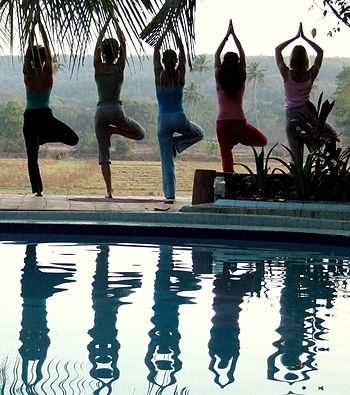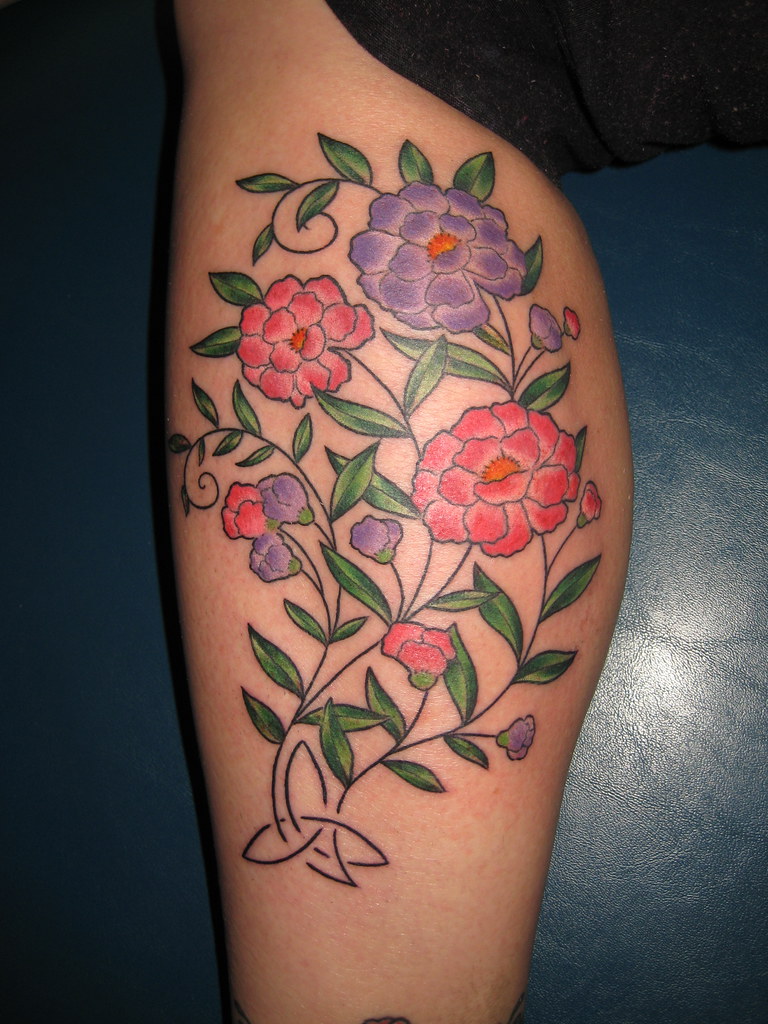 |
| Herpes genitalis (Photo credit: Wikipedia) |
Ayurveda approach to Genital Herpes
Dosha theory which helps in the diagnosis of the diseases
According to Ayurveda three doshas or three energetic forces control the activities of the body. These doshas are
1. Vata
2. Pitta
3. Kapha
VATA: The Vata dosha is the most important of the three doshas. It has been said in Ayurveda's classic books that “ pitta, Kapha and all other body tissues are considered lame without the assistance of VATA .” Vata dominates the lower part of the body, which is below the umbilicus. The movements of body fluid, metabolism, elimination of waste products, semen ejaculation, pushing the fetus out of the body, relaying stimulus to brain and response to organs and tissues, heartbeat, respiration, body movements, etc are assisted by VATA.
Vata dominated regions are intestines, lumbar region, ears, bones, and skin.
Vata gets vitiated due to following reasons.
1. Controlling natural urges like urination, defecation, hunger, thirst, etc.
2. Late nights.
3. Irregular food habits.
4. Talking in a high pitch.
5. Over physical and mental exertion.
6. Consumption of spicy, dry, bitter foods.
7. Exposure to severe dry and cold climate.
The opposites of the above-mentioned reason normalize the vitiated vata.
PITTA: The pitta dosha assists the body fire or Agni, which plays a major role in the body’s metabolic activities. The locations where pitta dominates are digestive system, skin, eyes, brain, and blood. Pitta maintains body temperature. The secretions like digestive juices pigments like melanin (bhrajaka pitta), hemoglobin (ranjaka pitta) are all types of pitta.
Pitta is dominant in regions of Umbilicus, stomach, sweat, lymph, blood, eyes, and skin.
PITTA gets vitiated due to following reasons.
1. Excess consumption of spicy, sour, salty foods.
2. Consuming alcohol in excess.
3. Overexposure to a hot sunny climate.
4. Short temperedness.
5. Using dried vegetables.
6. Indigestion of food.
The opposites of the above-mentioned reason normalize the vitiated pitta.
KAPHA: Kapha provides bulk to body, lubrications, moistness, fertility, stability, strength, and memory. It helps in the binding process wherever necessary. This is the heaviest of all doshas.
Kapha dominated regions are chest, neck, head, stomach, body fat, nose, and tongue
Kapha gets vitiated due to following reasons.
1. Sleeping in the daytime.
2. Consuming sweets, chilled food, in excess.
3. Consuming fish, sesame, sugarcane, milk, and milk products.
The opposites of the above-mentioned reason normalize the vitiated kapha.
When these doshas are in the balanced condition the body remains healthy. If these doshas get imbalanced the body succumbs to diseases. Doshas get imbalanced frequently due to change in climate, seasons, lifestyles, diet, etc. The treatment is to bring back the doshas to normalcy and expel the toxin or ama produced during the imbalanced condition.
Causes of Genital Herpes
Herpes is caused by a virus the herpes simplex virus (HSV), which belongs to the same family of viruses that cause chickenpox. There are two types of herpes simplex viruses
1. Herpes simplex type 1 (HSV-1) and mostly causes oral herpes
2. Herpes simplex type 2 (HSV-2). And mostly causes genital herpes
However, both type-1 and type-2 can occur in the genitals, oral area, or both.
Due to unhealthy lifestyles and diet the delicate balance between doshas gets disturbed. This disturbs the body fire or Agni.
(Agni is the body fire, which is responsible for the transformation of one substance to another. It breaks down the food substances, eliminates toxins and wastes, maintains body temperature, and resists the invasion of microbes by maintaining strong body immunity.
The body fire, which is assisted by balanced doshas, digests the food completely to form Pakwa Anna rasa (the liquid form of food which is completely digested by digestive enzymes), which is ready to get absorbed by body tissues. According to Ayurveda Pakwa Anna Rasa nourishes the body and its components to keep the body devoid of diseases. But when body fire is impaired there will be an incomplete digestion of food forming Apakwa Rasa (indigested food). The indigested food fails to nourish the body components leading to lowered body resistance.)
The disturbed Agni fails to digest the food and toxins get accumulated in the body due to improper metabolism. Accumulation of toxins reduces the body immunity and paves the way for invasion by microbes.
When a person who has low immunity comes in contact with the HSV virus, he/she gets the genital or oral herpes.
Unhealthy lifestyle
1. Overeating
2. Sleeping in the afternoons.
3. Over physical exertion.
4. Over mental exertion
5. Consuming food frequently even when not hungry.
6. Constant exposure to hot sunny climates
Unhealthy diet
Excessive consumption of
1. Salty, sour, hot, spicy food.
2. Sour curds
3. Alcohol.
4. Cheese
5. Charred and overcooked food.
6. Sesame, Bengal gram, horse gram, sesame oil, rice flour, garlic, fish.
1. Curds, salt, mushrooms, bamboo shoots, sour fruits, meat, prawn, pork, should not be consumed with milk. The above-mentioned foods should not be consumed by mixing one item with another.
2. Sprouts, honey, and milk should not be consumed with meat and fish.
3. Fish & milk: fish &sugarcane juice; jaggery & pork; honey & pork; milk & mango; banana & milk; are opposite foods.
The Transmission Of Genital Herpes
A person can get genital herpes in the following conditions
1. If he is sexually active and when he performs sex (oral or genital) with infected partners.
2. A person who has oral herpes transmits herpes to genital organs of a partner during oral sex and a person who has genital herpes transmits this to his partner during coitus when they have a genital contact.
3. The disease gets transmitted when the mucous membrane comes in contact with the infected area.
The disease gets transmitted mostly during the active phase. But it may spread even during asymptomatic (when a person is free of symptoms for a particular duration) phase. The virus needs a fluid media for its transportation. The body fluids like saliva, semen, vaginal tract secretions, etc. Mucous membranes in the mouth, vagina, urethra, or open wounds facilitate the virus invasion due to their moistness.
In Genital herpes, there is an imbalance of all three doshas (VATA, PITTA, KAPHA), which in turn vitiate lasika (lymph), blood (rakta), muscle (mamsa) and skin (twacha).
The imbalanced doshas vitiate skin and the immunity of skin cells is lowered. The virus attacks these weak cells and starts exhibiting symptoms on the affected area.
Local symptoms
1. Pricking sensation
2. Edema
3. Pain
4. Feeling of constriction
5. A sensation of ant creeping
6. Many small eruptions gathering in a small area.
7. These eruptions or blisters burst soon with exudates.
8. These blisters will have different colors according to the involvement of doshas.
(Blackish red or blue in vata, red, yellow, copper-colored in pitta, shades of white in kapha).
The weakened body immune system tries to resist the virus invasion but fails to achieve the goal. In this futile attempt the following systemic symptoms are exhibited.
Systemic symptoms
1. Fever
2. Weakness
3. Indigestion
4. Impaired bowels
5. Increased frequency of urination.
6. Body pain.
7. Increased thirst.
Imbalanced vata causes symptoms like pain, swelling, and body ache
The imbalanced pitta and vitiated blood and skin cause
1. Blisters,
2. Change the color of skin,
3. Cause burning sensation, and fever.
The imbalanced kapha and vitiated lymph cause itching, tingling sensation.
After the first attack, the virus moves from the skin through the nerve paths to base of the nerve and becomes inactive. Now herpes infected person will be devoid of all symptoms. But the imbalance of doshas still persists.
Reactivation of Virus to cause outbreaks
At unpredictable times, the virus becomes active. It multiplies and resurfaces on the skin by traveling through the nerve path and exhibits the symptoms locally. The severity of symptoms of the outbreak depends on the strength of body immunity.
The pelvis or shroni, nerves, and skin are dominated by vata. When vata gets vitiated due to precipitating factors, it reactivates the virus dormant in the base of the nerve end and the virus travels through nerve paths to reach the skin surface.
Precipitating Factors
As we know the outbreaks have few precipitating factors like
1. Excessive exposure to the sun.
2. Illness,
3. Poor diet,
4. Emotional stress
5. Physical stress,
6. Friction,
7. Steroids
8. Menstruation.
9. Emotional stress.
10. Genital trauma and intercourse.
11. Repeated infections such as a cold or pneumonia.
These factors increase vata and increased vata activates the virus, which is dormant.
Low Immunity The systemically imbalanced doshas interfere with body metabolism by vitiating the body fire (agni). This leads to indigestion and malassimilation of nutrients, which in turn causes poor immunity. Due to decreased immunity, the body fails to offer resistance to outbreaks.
Ayurveda Tips to avoid outbreaks
Avoid
1. Spicy, sour, fried, and junk food, which aggravates vata.
2. Precipitating factors.
3. Sleeping in the afternoon.
4. Meat products over fried or deep-fried in oil or fat.
5. Charred and overcooked food.
6. Consuming opposite food like fish and milk etc
7. Physical exertion after a meal
8. Taking bath immediately after exercise or heavy outdoor work.
Include honey, pomegranate, and fruits of Emblica Officinalis, legumes, dates, and raisins in your diet.
Practice Yoga and Meditation to control emotional disturbances
Ayurveda References
1. Sushruta Samhita
2. Charaka Samhita
3. Madhava nidana
4. Ashtanga Sangraha
5. Yoga Ratnakara











